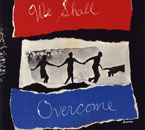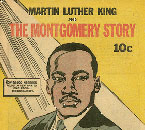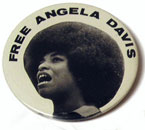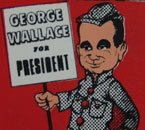Civil rights activists often turned to portable images—buttons, decals, brochures, comic books, and other artifacts—to disseminate persuasive messages meant to incite action or enthusiasm for political causes. These objects represented a variety of political causes, and include the campaign materials of black politicians as well as the broadsides of civil rights organizations. Their need to attract attention and their disposable nature inspired adventurous, spirited, and creative use of graphic design.
Image Credits/Captions (Click on thumbnails for full image)
Louis Lo Monaco (artist). March on Washington Souvenir Portfolio, 1963. Silkscreen on paper. 11 x 9.25 in. Collection of Civil Rights Archive/CADVC-UMBC, Baltimore, MD, 2005.50. The artist Louis Lo Monaco used fragments of disturbing photographs from Life magazine—notably, the image of a rabid police dog poised to attack a demonstrator—in a souvenir portfolio of collages issued by the National Urban League for the 1963 March on Washington. The portfolio was sold for one dollar to help defray the event’s cost.
Martin Luther King and the Montgomery Story, 1957. Offset lithograph on Paper. 9 x 13 in. Collection National Museum of African American History and Culture, Smithsonian Institution. The Fellowship of Reconciliation, an interfaith peace organization, published this comic book, which tells the story—through vivid pictures and texts—of the Montgomery Bus Boycott and its aftermath. 250,000 copies were distributed, both to advocate and offer instruction in civil disobedience.
Free Angela Davis, c. 1971. Offset lithography on paper, metal. 3 x 3 x 5/8 in. CADVC. 2005.108
George Wallace for President, 1968. Offset lithography on paper, metal. 5 x 4 x 1/16 in. Anonymous gift, CADVC,2008.6



